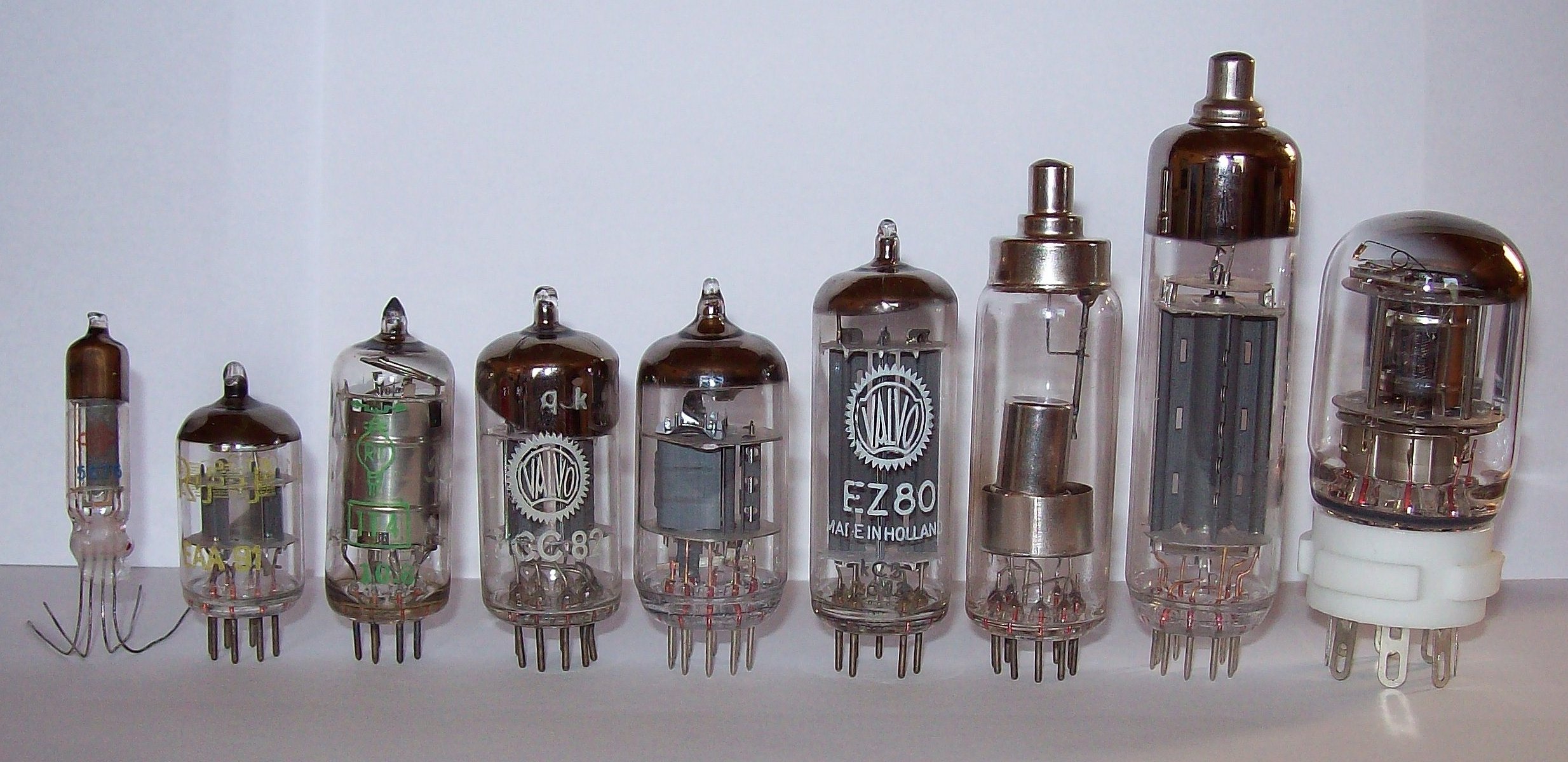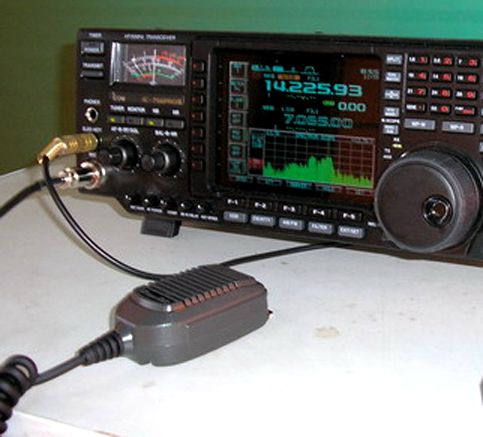|
Regenerative Circuit
A regenerative circuit is an amplifier circuit that employs positive feedback (also known as regeneration or reaction). Some of the output of the amplifying device is applied back to its input to add to the input signal, increasing the amplification. One example is the Schmitt trigger (which is also known as a regenerative comparator), but the most common use of the term is in RF amplifiers, and especially regenerative receivers, to greatly increase the gain of a single amplifier stage. The regenerative receiver was invented in 1912 and patented in 1914US Patent 1113149A, Edwin H. Armstrong, Wireless receiving system', filed October 29, 1913, granted October 6, 1914 by American electrical engineer Edwin Armstrong when he was an undergraduate at Columbia University. It was widely used between 1915 and World War II. Advantages of regenerative receivers include increased sensitivity with modest hardware requirements, and increased selectivity because the Q of the tuned circu ... [...More Info...] [...Related Items...] OR: [Wikipedia] [Google] [Baidu] |
Electronic Oscillator
An electronic oscillator is an electronic circuit that produces a periodic, oscillating or alternating current (AC) signal, usually a sine wave, square wave or a triangle wave, powered by a direct current (DC) source. Oscillators are found in many electronic devices, such as radio receivers, television sets, radio and television broadcast transmitters, computers, computer peripherals, cellphones, radar, and many other devices. Oscillators are often characterized by the frequency of their output signal: *A low-frequency oscillator (LFO) is an oscillator that generates a frequency below approximately 20 Hz. This term is typically used in the field of audio synthesizers, to distinguish it from an audio frequency oscillator. *An audio oscillator produces frequencies in the audio range, 20 Hz to 20 kHz. *A radio frequency (RF) oscillator produces signals above the audio range, more generally in the range of 100 kHz to 100 GHz. There are two ge ... [...More Info...] [...Related Items...] OR: [Wikipedia] [Google] [Baidu] |
Tuned Circuit
An LC circuit, also called a resonant circuit, tank circuit, or tuned circuit, is an electric circuit consisting of an inductor, represented by the letter L, and a capacitor, represented by the letter C, connected together. The circuit can act as an electrical resonator, an electrical analogue of a tuning fork, storing energy oscillating at the circuit's resonant frequency. LC circuits are used either for generating signals at a particular frequency, or picking out a signal at a particular frequency from a more complex signal; this function is called a bandpass filter. They are key components in many electronic devices, particularly radio equipment, used in circuits such as oscillators, filters, tuners and frequency mixers. An LC circuit is an idealized model since it assumes there is no dissipation of energy due to resistance. Any practical implementation of an LC circuit will always include loss resulting from small but non-zero resistance within the components and co ... [...More Info...] [...Related Items...] OR: [Wikipedia] [Google] [Baidu] |
Op Amp
An operational amplifier (often op amp or opamp) is a DC-coupled electronic voltage amplifier with a differential input, a (usually) single-ended output, and an extremely high gain. Its name comes from its original use of performing mathematical operations in analog computers. By using negative feedback, an op amp circuit's characteristics (e.g. its gain, input and output impedance, bandwidth, and functionality) can be determined by external components and have little dependence on temperature coefficients or engineering tolerance in the op amp itself. This flexibility has made the op amp a popular building block in analog circuits. Today, op amps are used widely in consumer, industrial, and scientific electronics. Many standard integrated circuit op amps cost only a few cents; however, some integrated or hybrid operational amplifiers with special performance specifications may cost over . Op amps may be packaged as components or used as elements of more complex integrate ... [...More Info...] [...Related Items...] OR: [Wikipedia] [Google] [Baidu] |
Transistor
A transistor is a semiconductor device used to Electronic amplifier, amplify or electronic switch, switch electrical signals and electric power, power. It is one of the basic building blocks of modern electronics. It is composed of semiconductor material, usually with at least three terminal (electronics), terminals for connection to an electronic circuit. A voltage or Electric current, current applied to one pair of the transistor's terminals controls the current through another pair of terminals. Because the controlled (output) power can be higher than the controlling (input) power, a transistor can amplify a signal. Some transistors are packaged individually, but many more in miniature form are found embedded in integrated circuits. Because transistors are the key active components in practically all modern electronics, many people consider them one of the 20th century's greatest inventions. Physicist Julius Edgar Lilienfeld proposed the concept of a field-effect transisto ... [...More Info...] [...Related Items...] OR: [Wikipedia] [Google] [Baidu] |
Vacuum Tube
A vacuum tube, electron tube, thermionic valve (British usage), or tube (North America) is a device that controls electric current flow in a high vacuum between electrodes to which an electric voltage, potential difference has been applied. It takes the form of an evacuated tubular envelope of glass or sometimes metal containing electrodes connected to external connection pins. The type known as a thermionic tube or thermionic valve utilizes thermionic emission of electrons from a hot cathode for fundamental Electronics, electronic functions such as signal amplifier, amplification and current Rectifier, rectification. Non-thermionic types such as vacuum phototubes achieve electron emission through the photoelectric effect, and are used for such purposes as the detection of light and measurement of its intensity. In both types the electrons are accelerated from the cathode to the anode by the electric field in the tube. The first, and simplest, vacuum tube, the diode or Flem ... [...More Info...] [...Related Items...] OR: [Wikipedia] [Google] [Baidu] |
Gain (electronics)
In electronics, gain is a measure of the ability of a two-port circuit (often an amplifier) to increase the power or amplitude of a signal from the input to the output port by adding energy converted from some power supply to the signal. It is usually defined as the mean ratio of the signal amplitude or power at the output port to the amplitude or power at the input port. It is often expressed using the logarithmic decibel (dB) units ("dB gain"). A gain greater than one (greater than zero dB), that is, amplification, is the defining property of an active device or circuit, while a passive circuit will have a gain of less than one. The term ''gain'' alone is ambiguous, and can refer to the ratio of output to input voltage (''voltage gain''), current (''current gain'') or electric power (''power gain''). In the field of audio and general purpose amplifiers, especially operational amplifiers, the term usually refers to voltage gain, but in radio frequency amplifiers it usua ... [...More Info...] [...Related Items...] OR: [Wikipedia] [Google] [Baidu] |
Armstrong Regenerative Receiver Circuit
Armstrong may refer to: Places * Armstrong Creek (other), various places * Armstrong River (other), various rivers Antarctica * Armstrong Reef, Biscoe Islands Argentina * Armstrong, Santa Fe Australia * Armstrong, Victoria Canada * Armstrong, British Columbia * Armstrong, Ontario * Armstrong, Thunder Bay District, Ontario * Armstrong, Ontario (Indian settlement) United States * Armstrong, California * Armstrong, Delaware * Armstrong, Florida * Armstrong, Georgia * Armstrong, Illinois * Armstrong, Indiana * Armstrong, Iowa * Armstrong, Minnesota * Armstrong, Missouri * Armstrong, Oklahoma * Armstrong, Texas * Armstrong, Wisconsin * Armstrong County, Pennsylvania * Armstrong County, Texas * Armstrong Lake (Blue Earth County, Minnesota), a lake in Minnesota * Armstrong Township, Vanderburgh County, Indiana * Armstrong Township, Pennsylvania (other), more than one, including ** Armstrong Township, Indiana County, Pennsylvania ** Armstrong ... [...More Info...] [...Related Items...] OR: [Wikipedia] [Google] [Baidu] |
Wireless Networking
A wireless network is a computer network that uses wireless data connections between network nodes. Wireless networking allows homes, telecommunications networks, and business installations to avoid the costly process of introducing cables into a building, or as a connection between various equipment locations. Admin telecommunications networks are generally implemented and administered using radio communication. This implementation takes place at the physical level (layer) of the OSI model network structure. Examples of wireless networks include cell phone networks, wireless local area networks (WLANs), wireless sensor networks, satellite communication networks, and terrestrial microwave networks. History Wireless networks The first professional wireless network was developed under the brand ALOHAnet in 1969 at the University of Hawaii and became operational in June 1971. The first commercial wireless network was the WaveLAN product family, developed by NCR in 198 ... [...More Info...] [...Related Items...] OR: [Wikipedia] [Google] [Baidu] |
Garage Door Opener
A garage door opener is a motorized device that opens and closes a garage door controlled by switches on the garage wall. Most also include a handheld radio remote control carried by the owner, which can be used to open and close the door from a short distance. The electric opener The electric overhead garage door opener was invented by C.G. Johnson in 1926 in Hartford City, Indiana. Electric Garage Door openers did not become popular until Era Meter Company of Chicago offered one after World War II where the overhead garage door could be opened via a key pad located on a post at the end of the driveway or a switch inside the garage. As in an elevator, the electric motor does not provide most of the power to move a heavy garage door. Instead, most of door's weight is offset by the counterbalance springs attached to the door. (Even manually operated garage doors have counterbalances; otherwise, they would be too heavy for a person to open or close them.) In a typical desi ... [...More Info...] [...Related Items...] OR: [Wikipedia] [Google] [Baidu] |
Transceiver
In radio communication, a transceiver is an electronic device which is a combination of a radio ''trans''mitter and a re''ceiver'', hence the name. It can both transmit and receive radio waves using an antenna, for communication purposes. These two related functions are often combined in a single device to reduce manufacturing costs. The term is also used for other devices which can both transmit and receive through a communications channel, such as ''optical transceivers'' which transmit and receive light in optical fiber systems, and ''bus transceivers'' which transmit and receive digital data in computer data buses. Radio transceivers are widely used in wireless devices. One large use is in two-way radios, which are audio transceivers used for bidirectional person-to-person voice communication. Examples are cell phones, which transmit and receive the two sides of a phone conversation using radio waves to a cell tower, cordless phones in which both the phone hands ... [...More Info...] [...Related Items...] OR: [Wikipedia] [Google] [Baidu] |



